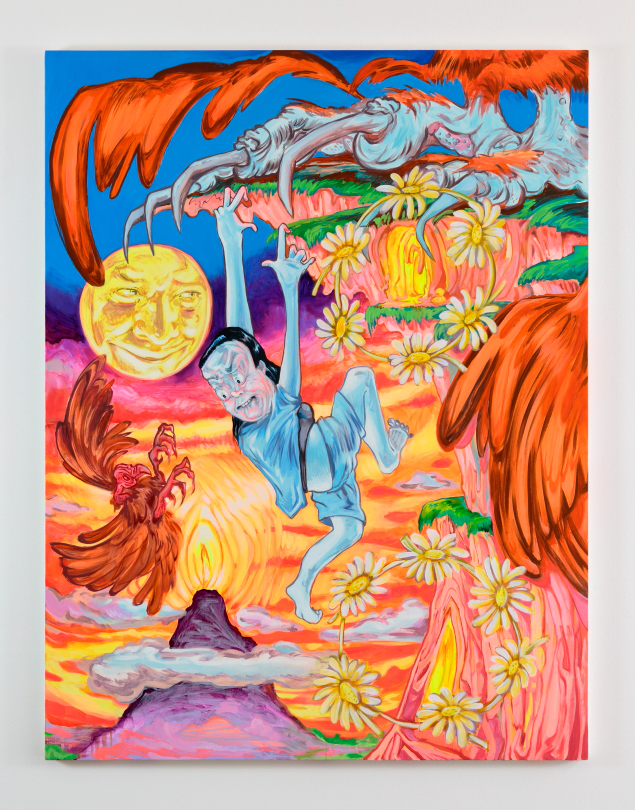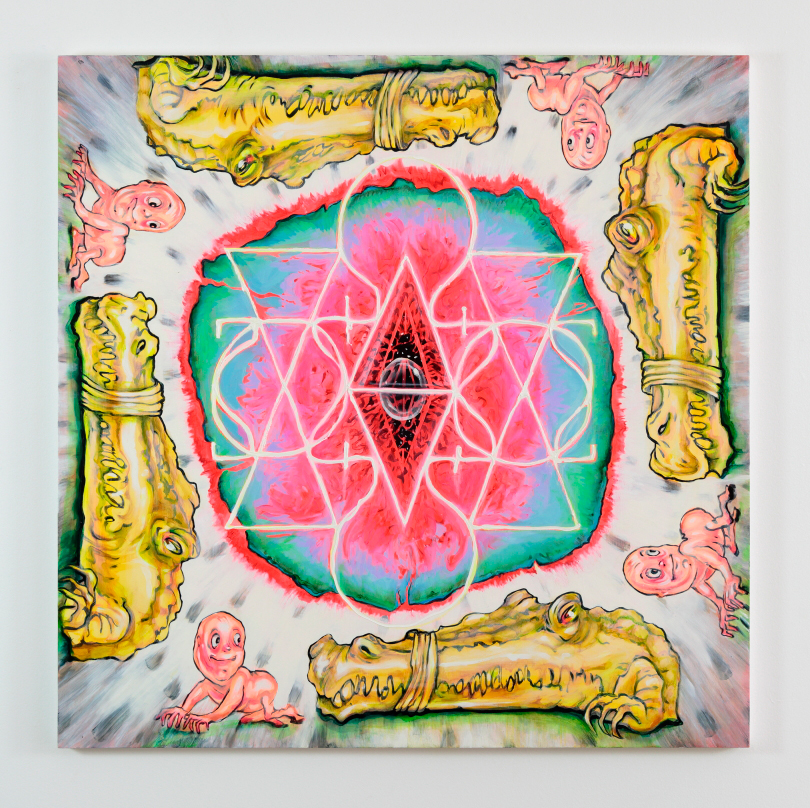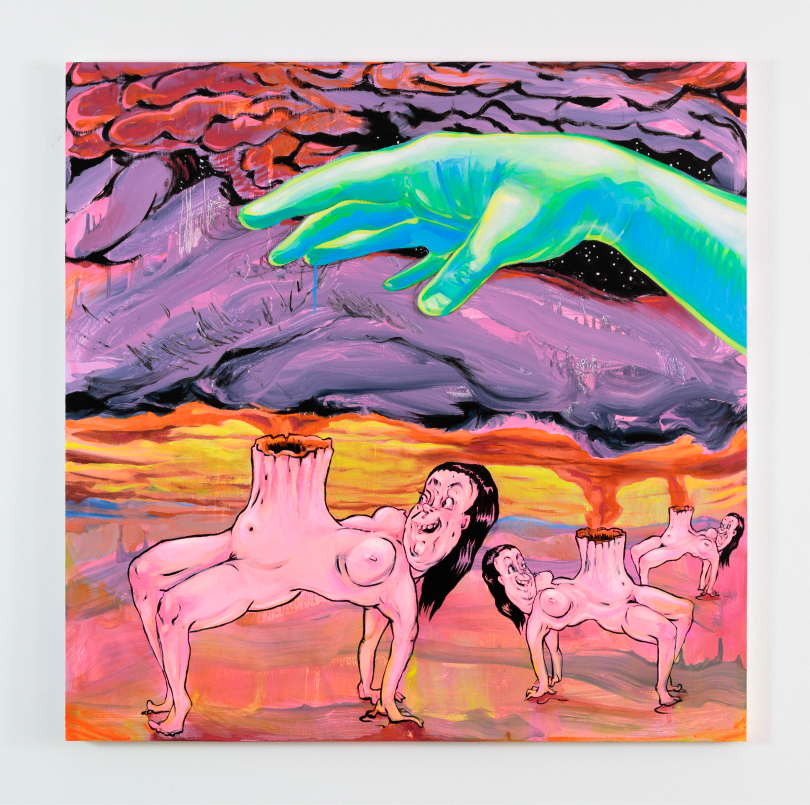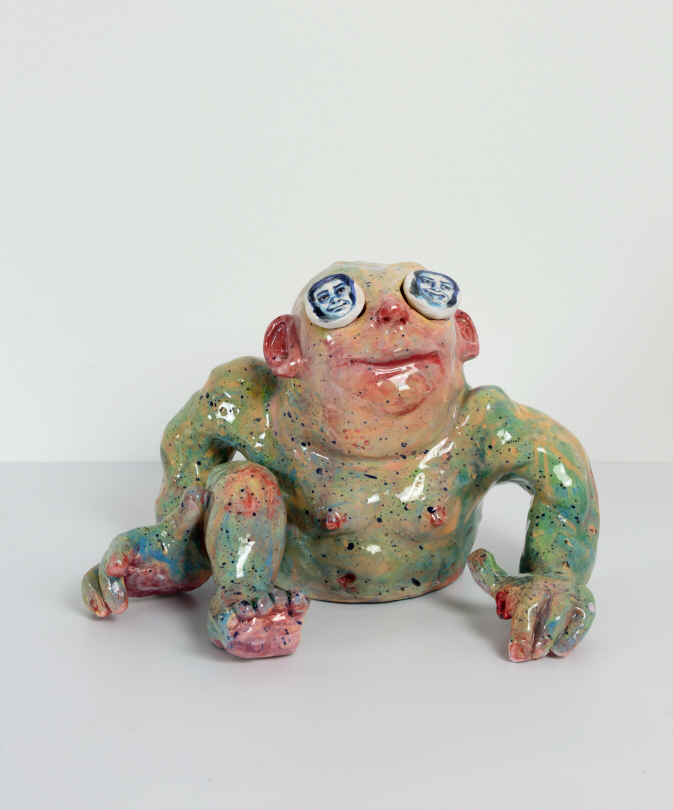Hayley Arjona
The F⊙⊙L.
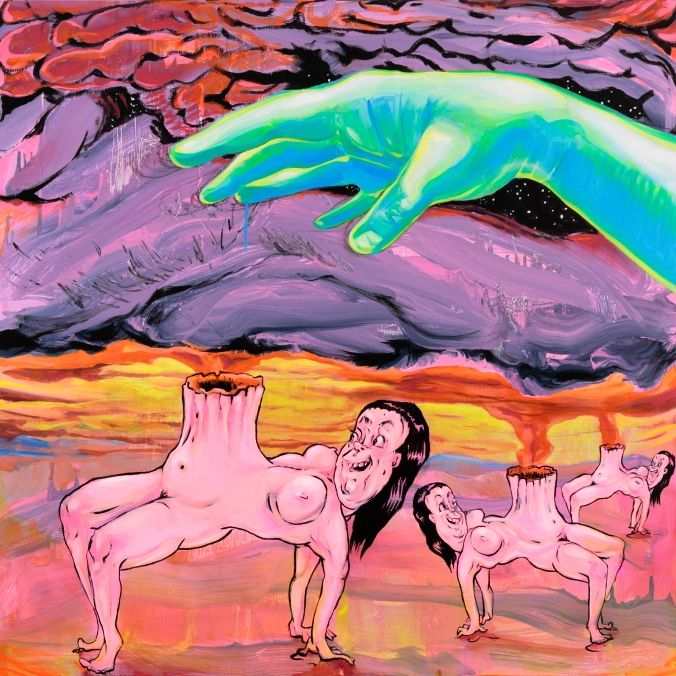
Hayley Arjona
The F⊙⊙L.
Hayley Arjona presents a series of paintings and small sculptures that relate with one another within a looping narrative. The sculptures appear as characters that have stepped out of the paintings into a performative drama where fantasy, neurosis and horror reign.
Hayley Arjona presents a series of paintings and small sculptures that relate with one another within a looping narrative. The sculptures appear as characters that have stepped out of the paintings into a performative drama where fantasy, neurosis and horror reign. The paintings are mostly life-size and like the sculptures they demand intense scrutiny. Look closely and find teeth, skeletal bones, claws, animalisms inside architectural spaces, crevices, tunnels, orifices, dismembered body parts. Inside the body. Inside the mind. Imploding and exploring a psycho-dynamic narrative.
Art historically the artist nods towards surrealism and the dreamwork undertaken in psychoanalysis but she envelops this in a sense of fun. There is certainly depth psychology here but it’s not taking itself too seriously. The artist presents this for our contemplation. But what astonishes me in this work is the way in which the artist lays bare a self- psychoanalysis. What are we to make of Cosmic Betrachten where the artist thrusts her multiple selves and her exploding bellies into a thunderous apocalyptic sky. The body is obviously wounded but the look on her face is triumphant. Is she thrusting molten lava into the universe or waiting eagerly for it to pour into her? And what is the slim green hand threatening to do?
Hayley Arjona’s art practice is clearly influenced by her studies of the unconscious mind.1 Hidden and unknown desires and fantasies which are given voice through our dreams recur in her work. These are often violent, unexplainable but containable in art. Artists explain the working of mind, soul and psyche more accurately than those committed to science alone. Sigmund Freud, Carl Gustav Jung and Melanie Klein each used paintings, literature and poetry to explain their theories of the mind. Wilfred Bion who studied under Melanie Klein came up with an interesting theory about wild thoughts – those peripheral, silly, violent, erotic glimpses that we have – and the ways in which artists nurture these and are able to contain them within art works. The best works, according to Bion, are those that represent the truth of these wild thoughts and make them available for future generations. They do this by containing an emotional experience – literally drawing a line around it – that can be shared by others.2
Hayley Arjona’s paintings and sculptures depict minor and major eruptions of the mind. Here we see a battle in progress as the ego comes to understand its other. The work is tough and whimsical and at times heartbreaking. She does not shield us from much when she presents herself shitting in her own wishing well in the painting Wishing Hell but the ceramic version, like all the sculptures, celebrates this in a fairy-tale characterisation. In my mind, these paintings and their 3-D characters in ceramics are like performance art, a wild avant-garde, operatic cacophony. I think of performance artists like Katya Grokhovsky whose painting, installation and performance practice approaches the feminine/feminism in a similar way. Paul McCarthy does the same for the masculine and, of course, is much better known because of this.
Wild female work is alive and well, warped and deformed, violent and brave in Arjona’s visual art practice. A critique of patriarchy and its Oedipal mythologies and ideologies is at the heart of these works which are made more intense because of the extreme personalisation.
In The Crumbs of Love, a sentimental rendition of an infant, stands within or outside another’s imaginary body – an anaconda snake’s aqualung-like physicality provides a soft threat. The child is pissing herself whilst feeding treats to a tribe of skeletal figures led away by a naked man. Happy Birthday Baby is more sinister with the phallic candle melting over the severed claw of an animalist being who turns away from us as small rodents sniff the air. The exhibition has an uncanny aspect as we watch the artist’s dreamscape unfold. Babies and crocodiles take on equal importance. The Claybies are cute lumpen figures, with Arjona reflected in their eyes. Crocodile Cradle plays on a more violent edge, sometimes the child has the eyes of the artist, at other times not. The gaze is literally sliced out of the face and separate to the object, prone, blinded. But the little girl looks fairly contented in the jaws of the beast. Palace of Answers on close inspection doesn’t offer much respite from the psycho-babble of the unconscious but it’s a fabulous ceramic interpretation of a horrible dream. Arjona’s take on feminism is very contemporary and empathetic, every wound resonates, all beasts are welcome.
Notes
2. See Naomi Wynter-Vincent, ‘In C: Towards a ‘Bionian’ Theory of Creativity’, British Journal of Psychoanalysis, 38:4, 2022, pp. 655-665
© 2025 professor ANNE MARSH | SITE BY jamie charles schulz

